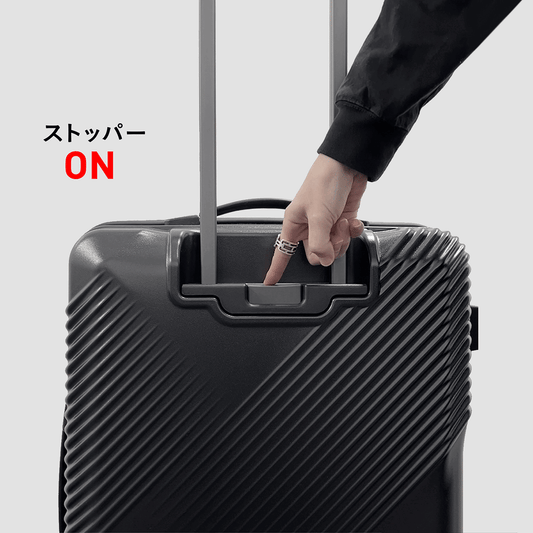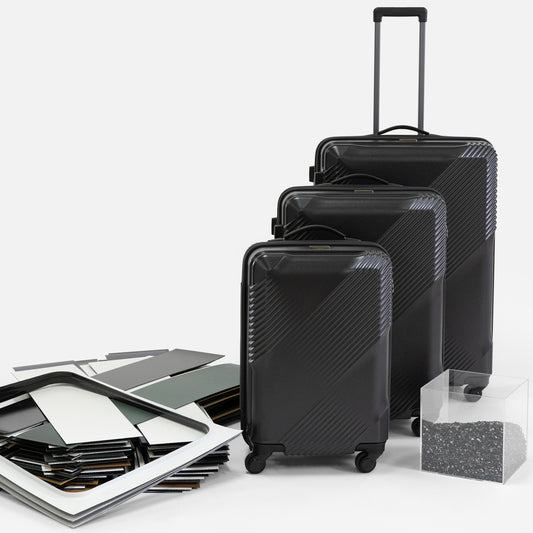
Our challenge to create suitcases 100% made from recycled scraps
Share
Recycling end material-Technology that has continued since our founding
The main body of the suitcase is manufactured using a method called "vacuum forming." This is a system that heats and softens a thermoplastic resin sheet, making it adhere tightly to the mold.
After vacuum forming, the material is cut into the shape of the suitcase itself, so the cut parts are left behind as "offcuts," but these are crushed and made into a plate again to be reborn as a new suitcase.
ACE Luggage has been working to avoid wasting materials since its founding in 1960 .

At the Hokkaido Akabira factory, we mainly use recycled materials and new materials in two-layer sheets, with a recycled material usage rate of approximately 50%. This recipe maintains a balance between strength and flexibility, and has a proven track record of producing high-quality products for many years.

<Recycled materials> are melted at temperatures exceeding 200℃ and extruded into a plate shape, so they are crushed to a certain level of fineness.

Strategy for 100% recycled materials
Although we already had the technology to recycle materials, there were concerns about using ``100%'' recycled materials.
That is, "the shell becomes softer."
In order to find a balance between flexibility and strength, we combined the ideas of the designer and development team and gave them shape. After conducting repeated strength tests at the A.T.I. ACE Quality Institute, which is responsible for verifying strength and durability and collecting data, we found that the softness of the shell works well in some areas.
The material flexes, dispersing the impact.
A "drop impact test" tests the strength of a weighted product by dropping it five times from a height of 120 cm while changing the direction of the casters, and also dropping it five times from the glide.
If the main body material is too hard, it may crack, but if it is soft, the force that hits the casters will be dispersed when it falls vertically.

A "fall test" involves testing durability by dropping a weighted product inside a gigantic rotating drum with a diameter of 3.3m that has obstacles such as protrusions inside.

A "handle strength test" involves rapidly moving the handle up and down 5,000 times with a weight loaded to verify the durability of the handle, main body, lock, etc.

It has passed all test items and has been proven to be strong, durable, and of reliable quality for safe use.
-----
Since our founding, we have carried out milling of scraps as a matter of course. What we have been steadily building up has now been given the opportunity to see the light of day. As people who live in Hokkaido, conservation of the natural environment is an issue very close to our heart. People often feel uncomfortable with the temperature and humidity, such as "hot and humid in the summer and heavy snow in the winter."
Recycling scraps may be a tiny thing for the earth. However, we will start by doing what we can, no matter how small.





